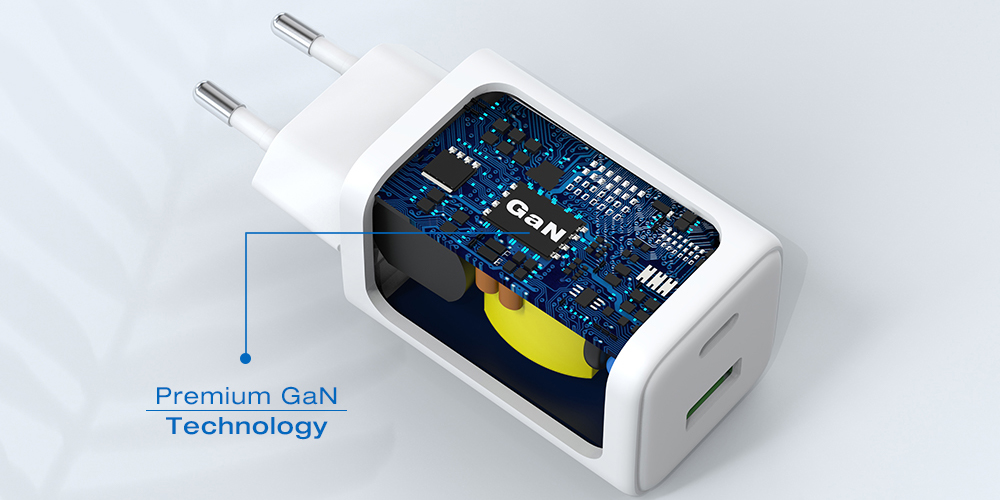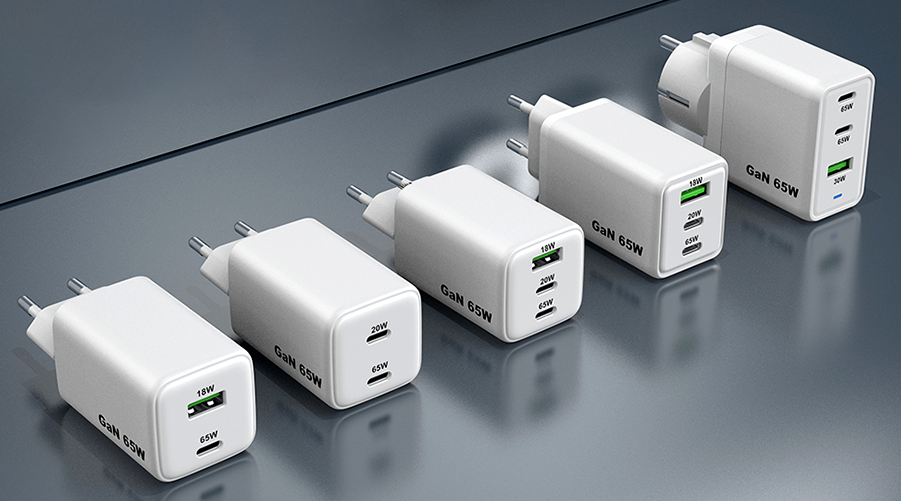The 65W Charger Revolution: How This Powerhouse Became the Global Standard
In 2024, 65W chargers quietly captured 43% of the global fast-charging market, dethroning both 30W "pocket rockets" and 100W behemoths. But how did this Goldilocks wattage become the universal sweet spot? The answer lies in a perfect storm of GaN innovation, remote work trends, and regulatory shifts—all while hitting the elusive trifecta of power, portability, and price.`·

1. The GaN Breakthrough: Shrinking Physics, Expanding Possibilities
Technical Marvel:
Gallium Nitride (GaN) semiconductors enabled 65W chargers to achieve what silicon couldn't:
·58% size reduction vs. traditional 65W adapters
·40°C lower operating temps through integrated heat dissipation layers
·93% energy efficiency (vs. 85% for silicon-based units)
Real-World Impact:
Take Satechi's 165W desktop charger—a marvel of GaN engineering. Its 65W USB-C port alone outputs enough juice to charge a MacBook Pro 14" from 0-50% in 30 minutes, while two 20W ports handle phones simultaneously. This multi-device prowess transformed 65W from a niche spec to a mainstream must-have.
2. Remote Work's "Power Mobility" Demand
2024 Global Workforce Data Reveals:
·68% of digital nomads list "compact high-wattage charging" as their top tech priority
·65W emerged as the minimum viable wattage for productivity:
·Charges most Ultrabooks at full speed (e.g., Dell XPS 13: 60W required)
·Powers 4K portable monitors via USB-C PD passthrough
Case Study:
NomadList's community survey shows 72% of remote workers replaced all chargers with a single 65W GaN unit. The tipping point? Anker's 735 Charger (Nano II 65W) weighing just 93g—lighter than a smartphone.

3. Aviation Rules & Regulatory Catalysts
The 100W Tipping Point:
·IATA's 2023 regulation classifies chargers above 100W as "restricted aviation goods"
·65W became the safe threshold for hassle-free travel
Compliance Edge:
·EU's updated ERP 2025 standards reward 65W chargers with <0.15W no-load consumption
·Middle East's SASO certification now mandates 65W+ units to include Arabic thermal warnings
4. The OEM Boom: Democratizing 65W Tech
Supply Chain Wins:
·Shenzhen's GaN ecosystem slashed 65W BOM costs by 42% since 2021
·Cross-border e-commerce platforms report 217% YoY growth in 65W exports
B2B Game-Changer:
For businesses, 65W offers:
·MOQ Flexibility: Scalable from 1K units (vs. 100W's 2K minimum)
·Customization Ease: Modular designs allow mix-and-match ports (USB-C, QC3.0, PPS)

5. Future-Proofing Your 65W Strategy
2025 Trends to Watch:
·Dynamic Voltage Scaling: Adaptive 20V/3.25A to 5V/3A switching for battery health
·AI Thermal Management: Predictive overheating prevention via onboard sensors
Pro Tip for Buyers:
When sourcing 65W OEM chargers, demand:
·USB-IF PD3.1 Certification (Mandatory for EU/ME markets)
·±5% voltage stability across all ports
·12-month aging test reports (critical for GaN longevity)
Conclusion: The 65W Era is Just Beginning
From Dubai's tech souks to Berlin's startup hubs, 65W chargers have become the silent workhorses of our hyper-connected age. As GaN tech matures and USB4 adoption rises, this wattage sweet spot isn't just surviving—it's evolving.
Ready to Join the Revolution?